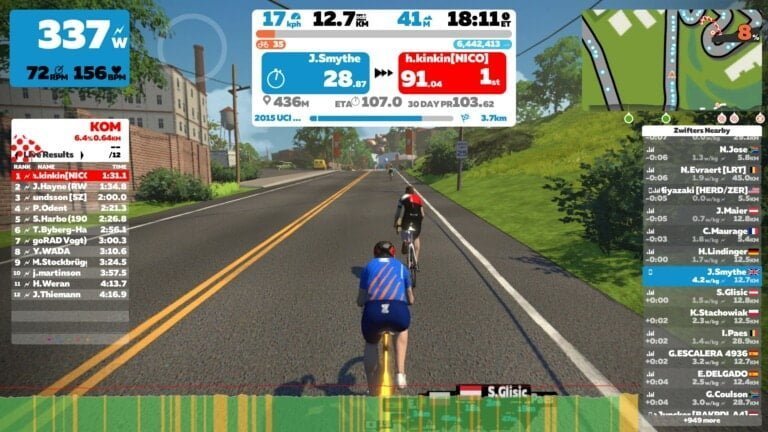Any links to online stores should be assumed to be affiliates. The company or PR agency provides all or most review samples. They have no control over my content, and I provide my honest opinion.
Let’s be real, online casinos have evolved a lot since their bulbous, pop-up-filled initial years. What began as dodgy flash-based slot machines connected via dial-up has become a billion-dollar industry with tech stacks that would make a Silicon Valley engineer blink twice. And if there’s anything that brings players back for more, it’s those wonderful two words: Free spins.
But have you ever stopped to wonder how these free spins US actually work? What’s the technology behind online casinos, and why are free spins such a big thing? Let’s take a closer look.
The digital heartbeat: RNGs and game engines
At the center of each online casino game lies a bit of technology known as the RNG, short for Random Number Generator. Imagine this as the pulse of each digital slot machine. The RNG runs around the clock generating random sequences of numbers every millisecond, even when you’re not pressing spin. When you press that shiny button, the RNG generates the numbers correlating to certain symbols on the reels of the slot.
It is this that makes internet slots appear to be fair, at least in theory. Modern RNGs are typically pseudo-random, i.e., they use a seed value and complex algorithms to produce randomness. The better the RNG, the less likely it is to be hacked or predicted. Nearly all reputable casinos have their RNGs tested by external companies like eCOGRA or iTech Labs.
The actual game logic, the part that goes, “Right, this set of figures is three cherries and a multiplier”, lies in the game engine. This is similar to the backstage part of your favorite slot. It takes the RNG result, appends game rules (paylines or wilds), and passes the result to the front-end graphics you see spinning and bouncing.
The UX layer: HTML5 and game design
Those Adobe Flash days are in the past. New casino games are coded using HTML5 so they can run perfectly on any device – desktop, tablet, or phone. Front-end frameworks are used by game developers to animate reels, display win alerts, and sync sound effects so they all have an edge of excitement.
And yes, free spins have their own animation set. Ever noticed how triggering a bonus round gets its own little cinematic? That’s not just for show. It’s all designed to increase time-on-site and player engagement. In fact, you’d be surprised how much A/B testing goes into designing these effects. Game developers are constantly tweaking things like reel spin speed and win animations to hit the dopamine sweet spot.
Free spins: A hook powered by technology
All right, free spins. On the surface, they are a simple bonus feature – “Spin the reels a few times for free, maybe win something, no strings attached.” But underneath, a lot is happening. Free spins are also governed by conditional logic that’s hard-coded into the game. They’re essentially trigger-driven events. Three scatter symbols? Ah, the game engine flips an electronic switch to enable the free spin mode. That mode can use an independent set of reels, modified payout tables, or even modified volatility (yes, some games boost your chances of winning simply for free spins – it’s all math).
Free spin games also operate on a sub-RNG, separate from the base game. This is for the sake of fairness and compliance with gaming laws in different jurisdictions. Some games even pre-compute a set of outcomes in advance (a method referred to as pre-computed outcomes), especially when bonus rounds get more complex.
APIs and casino platforms
Most online casinos don’t create games in-house. They instead license game titles from third-party game developers like NetEnt, Play’n GO, or Pragmatic Play. They integrate these games into their platform via APIs (Application Programming Interfaces). That’s right – your welcome offer free spin bonus? It typically happens as a result of a backend API request to check your account status, available bonuses, and qualification.
Here’s a sample flow:
- You log in and cash out a 20 free spin bonus.
- The casino backend flags your user ID and calls the game provider’s API.
- The game provider enables server-side free spins.
- Upon game launch, it checks the session token and goes into the free spin mode.
All this happens in milliseconds because of load-balanced servers and cloud infrastructure.
Security, fairness, and compliance
You might ask, “Okay, but how do I know the game ain’t fixed?” Enter blockchain and provably fair gaming, terms that are starting to shake up the industry. Several innovative casinos now offer provably fair games, which use cryptographic hashing to confirm that each spin or game outcome was untampered with and random. The concept is very much like Bitcoin: You get a hash of the outcome before the game starts, and then when it concludes, you can verify that it was not rigged.
In addition, casinos are strictly regulated (at least the legitimate ones). All bonus aspects, such as free spins, are subject to regulation by gambling commissions in places like Malta, the UK, and Curacao. Regulations cover elements such as minimum RTP (Return to Player), volatility levels, and even the promotion of free spins.
Final thoughts
So, certain free spins are nothing more than a shiny and unwanted bonus, yet in reality, they’re a complex mix of random number generation, game engine practice, cloud APIs, front-end animation, and behavioral psychology. It’s a beautiful mess of technology that’s been delicately fine tuned to entertain players, engage them, and, let’s not kid ourselves, get them to spend money.
Whether you’re a programmer, a numbers nerd, or just somebody who enjoys the occasional whirl, having some idea of the technology behind the game places it in another light. The next time you trigger a bonus round, consider this: Somebody spent months coding that small “congratulations” animation.







